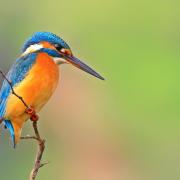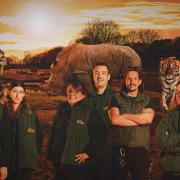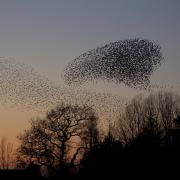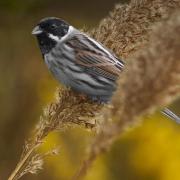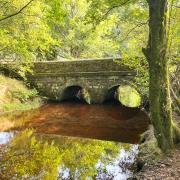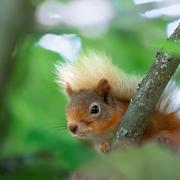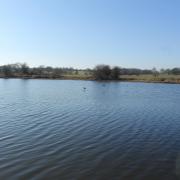This month, the world’s greatest athletes should have gathered in Tokyo but without that spectacle to enjoy, The Lancashire Wildlife Trust’s Alan Wright looks at some of nature’s superstars.

Almost every week this summer I have been treated to a day where I meet up with a roe deer buck as I wander around the meadows close to my Lancashire home.
I often wondered how these slender, beautiful beasts managed to get into fenced off fields, where they are safe from nosy humans and dogs. The buck was standing on a path watching us approach, then it almost nonchalantly leapt a four-foot fence and wandered into the field – from a standing start!
In actual fact, roe deer are generally able to walk up to a six-foot fence and clear it, in single bound. The whitetail deer of North America can jump up to 15 feet, according to reports.
Insects are the real super-jumpers, of course, with grasshoppers around the country leaping huge distances to stop us trampling on them in the undergrowth.

And the reigning champion is the flea. A flea can jump more than 150 times its height, along a distance of more than 200 times its body length. For a human, that would mean a 400-metre long jump and a 250m high jump – the equivalent of leaping a 70-storey skyscraper.
The mosses around Garstang are home to the UK’s fastest mammal, the brown hare. You can almost be sure of seeing these amazing creatures when you visit our Winmarleigh Moss nature reserve and there are daily sightings from the car park at Brockholes.
Brown hares can shift, stepping on the gas from a standstill to up to 45mph, to escape predators. You can recognise them because they are bigger and more streamlined than rabbits, with black ear-tips.
That speed has, unfortunately, made them popular for coursing, a cruel activity that was out of date even in early part of last century, but people still do it. How anyone cannot just enjoy “the cheetah of the mosslands” without hurting it is beyond me.
And while Usain Bolt would be left trailing behind our hare, the otter would teach Adam Peaty a thing or two about agility in the water. World champion Peaty would stand a chance with similar speeds (about 1.5mph)on the surface, but the otter woud leave him treading water once it dips beneath the surface, reaching speeds of over 5mph. Fish, on the other hand, can swim up to 25mph.
Otters are becoming more common on the River Ribble and have dived into the Meadow Lake at Brockholes in recent years.
If you want to see a world champion in Lancashire, then watch the skies and look out for the peregrine falcon. In a hunting dive, this magnificent bird can reach up to 200mph, making it one of the fastest creatures on earth. Peregrines are becoming more and more common in the region, with some even nesting on local churches and skyscrapers in Manchester city centre.
Humans would indeed be superhuman if they got anywhere near the speeds and agility of our specialised wildlife. Watching a bat fly with amazing dexterity and pace makes you wonder how villains ever got the better of Batman if he actually shared some of its skills.
I must finish with the findings of our friend botanist Josh Styles, who has been reintroducing rare plants to mosslands as part of his North West Rare Plants Initiative. One of Josh’s successes has been the lesser bladderwort, which is now thriving on peaty areas.
This is the fastest thing on earth Josh says – the lesser bladderwort can catch small freshwater bugs in 1/10,000th of a second. Can you imagine Olympic officials trying to capture a false start there?
Get involved
The Wildlife Trust for Lancashire, Manchester and North Merseyside is dedicated to the protection and promotion of the wildlife in Lancashire, seven boroughs of Greater Manchester and four of Merseyside, all lying north of the River Mersey.
It manages around 40 nature reserves and 20 Local Nature Reserves covering acres of woodland, wetland, upland and meadow. The Trust has 29,000 members, and over 1,200 volunteers.
To become a member of the Trust go to the website at lancswt.org.uk or call 01772 324129.














